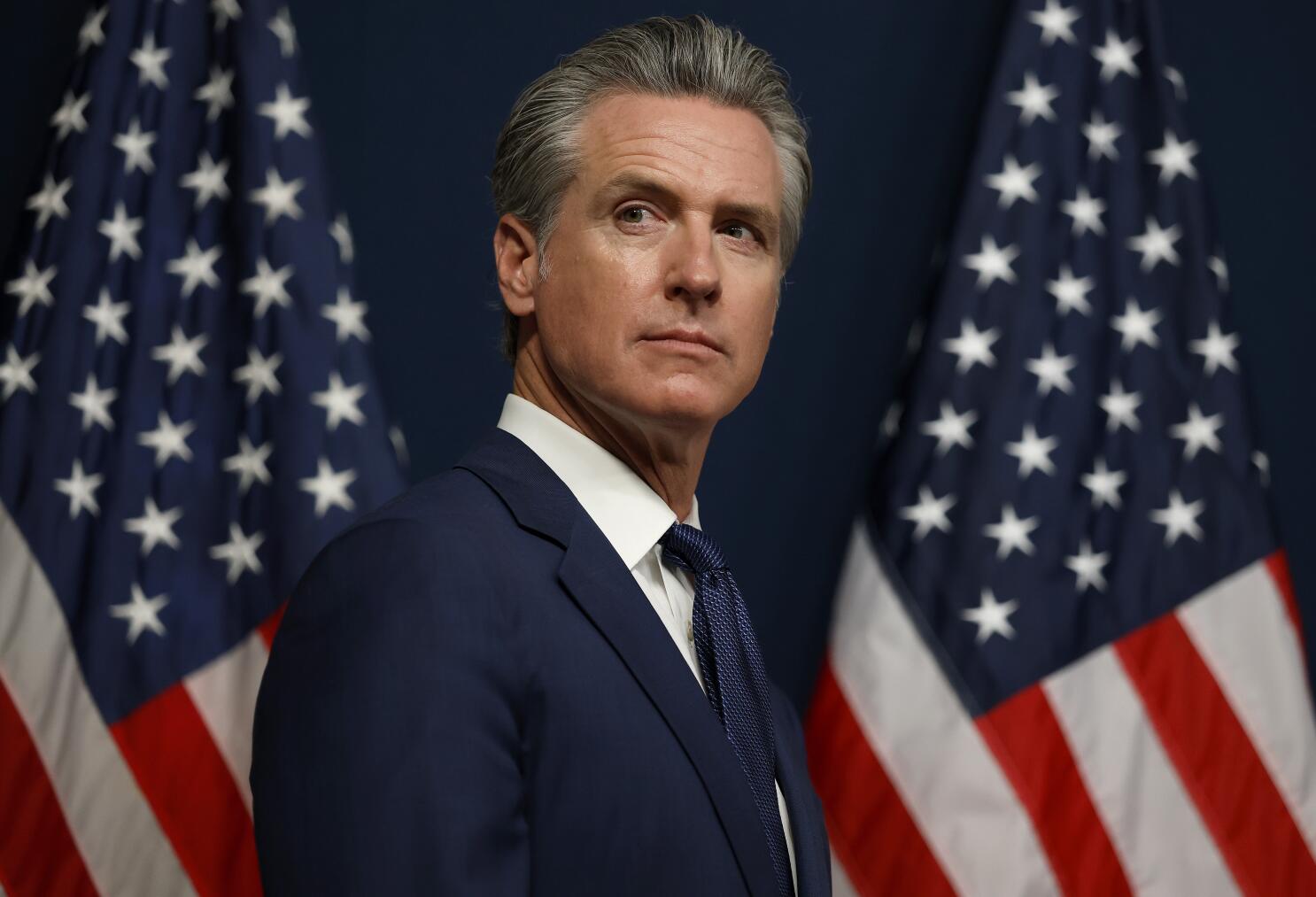By Sammy Roth
Copyright latimes

Last month, I wrote that California is backsliding on climate, and that it’s mostly Gov. Gavin Newsom’s fault. I took him and his appointees to task for undermining rooftop solar, propping up the Aliso Canyon gas field and slowing implementation of a single-use plastics recycling law, among other offenses. So it’s only fair that I give him credit for his actions last week, at the close of the legislative session. Thanks partly to pressure from Newsom, lawmakers struck a series of deals to limit electric rate increases, boost clean-energy supplies and extend an emissions-reduction program called cap-and-trade. Environmentalists were justifiably furious over a deal to advance oil drilling in Southern California’s Kern County — a painful compromise that lawmakers may come to regret. But the state’s top politicians did some valuable work, too. Here’s what they accomplished — and why the next governor needs to do a lot more. Legislators passed several bills meant to help reduce the cost of electricity — a top priority for lawmakers looking to tackle the state’s high cost of living, and also a smart move for climate progress. People are more likely to drive electric cars, and install electric heat pumps to warm and cool their homes, if electricity is less expensive. Perhaps most important is Senate Bill 254, which reins in utility profits. Investor-owned utilities don’t profit on electricity sales; they charge customers only what the companies paid to buy or generate the power. But shareholders of such utilities — namely Southern California Edison, Pacific Gas & Electric and San Diego Gas & Electricity — typically earn about 10% when the companies invest in infrastructure, such as new power lines. Those profits come from the monthly bills paid by utility customers. But under SB 254, shareholders of Edison, PG&E and SDG&E won’t earn a dime on the next $6 billion the utilities spend to reduce the risk of wildfire ignitions from their infrastructure, starting in 2026. That could save customers $3 billion over 10 years, according to the Utility Reform Network, a ratepayer watchdog group. SB 254 also lays the groundwork for government loans to fund construction of some new power lines. That would be less expensive than utility funding, because ratepayers wouldn’t need to cover shareholder profits. “If we execute [on this], then it potentially saves $3 billion per year over the next 20 years,” said Sen. Josh Becker (D-Menlo Park), who chairs the Senate energy committee. It’s easy to discern how Newsom overcame utility opposition to those ideas. With Edison facing tens of billions of dollars in possible damages if it’s found to have ignited January’s Eaton fire, utility industry executives have urged lawmakers to replenish a dwindling wildfire fund that helps them cover liability claims. They’re desperate to avoid a repeat of PG&E’s bankruptcy filing following the 2018 Camp fire. Lo and behold, lawmakers heeded the industry’s pleas: SB 254 includes a provision that will add $18 billion to the wildfire fund, half from utility shareholders and the other half from customers. Customers are already paying into the fund through a roughly $3 charge on their monthly bills; those charges will now continue until 2045. That may sound icky, but I think it was the right call. Yes, the big utilities are profit-making machines with a legal obligation to put their bottom line above all else. But we need them financially healthy if we’re going to confront the climate crisis with speed and scale. “We had to figure that out,” Becker said. Another big win for Newsom: Assembly Bill 825, which will help establish a Western electricity market that makes it easier to share solar and wind power across state lines. By helping California import low-cost wind energy from gusty places like New Mexico and Wyoming — and export solar when we have extra — the market should help us keep the lights on without fossil fuels, and without driving up utility bills. Skeptics, including some environmentalists, argued a regional market would require California to give up control of its power grid, and possibly force the state to import coal-fired electricity from Utah and Wyoming. Personally, I’m not worried. Neither is Becker, who said the market will be especially useful during the few dozen hours a year when extreme heat drives up air-conditioning use, stressing the grid. Rather than build excess solar plants and electric lines to avoid blackouts, California can lean on renewable resources elsewhere in the West. Becker told me California doesn’t need to be like a Walmart sizing its parking lot for Christmas traffic jams, when most of the time all it needs is enough spaces for a regular Tuesday morning. “You can build a parking lot for Christmas, or you can build a regional [energy] market,” he said. Underlying much of the legislative deal-making was one of the state’s signature climate programs, cap-and-trade, which sets statewide limits on heat-trapping emissions from large polluters including power plants and refineries. Companies buy emissions permits at quarterly auctions, which generate revenue for climate solutions. Before last week’s bills, cap-and-trade was set to expire in 2030. But experts said uncertainty over the program’s future was causing permit prices to fall at the auctions, leading to less revenue. Newsom responded by prodding legislators to extend cap-and-trade until 2045. Although the program has fairly widespread support, his proposal frustrated some environmentalists, who wanted lawmakers to strengthen cap-and-trade by giving away fewer free permits to the oil and gas industry. Big Oil, meanwhile, wanted more leeway to pollute, arguing the restrictions have driven up energy costs. The governor got his way in Assembly Bill 1207, which extends cap-and-trade with few changes. Newsom also secured $20 billion in cap-and-trade funding for California’s long-delayed bullet train. Even though the project is $100 billion over its original budget with no timeline for completion, Newsom has never wavered in his support, likely due to its strong labor-union backing. When I asked Becker how he felt about the funding — which he voted for — he chuckled. “Can I say no comment?” he asked, laughing again. I’d love to take a bullet train from L.A. to San Francisco, and it kills me to see the Trump administration attacking high-speed rail. But Newsom’s insistence on dedicating so much money to the slow-moving project — instead of, say, electric vehicle incentives — serves as a reminder that he’s first and foremost a presidential candidate. Just think about his latest climate accomplishments: Lower energy prices, at least in theory. A regional electricity market supported by power companies that stand to profit, and a bullet train supported by labor. A cap-and-trade extension that oil companies were ultimately willing to live with. All understandable choices if you want to win the White House. It’s also no wonder Newsom infuriated environmentalists with last week’s most controversial energy legislation: Senate Bill 237, which will speed approval of thousands of new oil wells in Kern County by limiting environmental review. With two of the state’s nine refineries closing in the next year, Newsom decided more drilling is needed to keep gasoline prices from rising — even if it means Californians breathe more hazardous air pollution. Will it work? Some experts are skeptical, but there’s no question Newsom can use the law to broaden his political appeal: Hey look, a Democrat who can get behind oil drilling! He cares about the climate crisis, but he knows cost of living comes first. Presidential material, right? Sounds great — until the next destructive fire, the next deadly heat wave, the next devastating flood. Which is why Californians should keep climate front of mind when they elect a new governor next year. We need a leader who puts climate first all the time, not just when the politics are convenient. This is the latest edition of Boiling Point, a newsletter about climate change and the environment in the American West. Sign up here to get it in your inbox. And listen to our Boiling Point podcast here. For more climate and environment news, follow @Sammy_Roth on X and @sammyroth.bsky.social on Bluesky.



